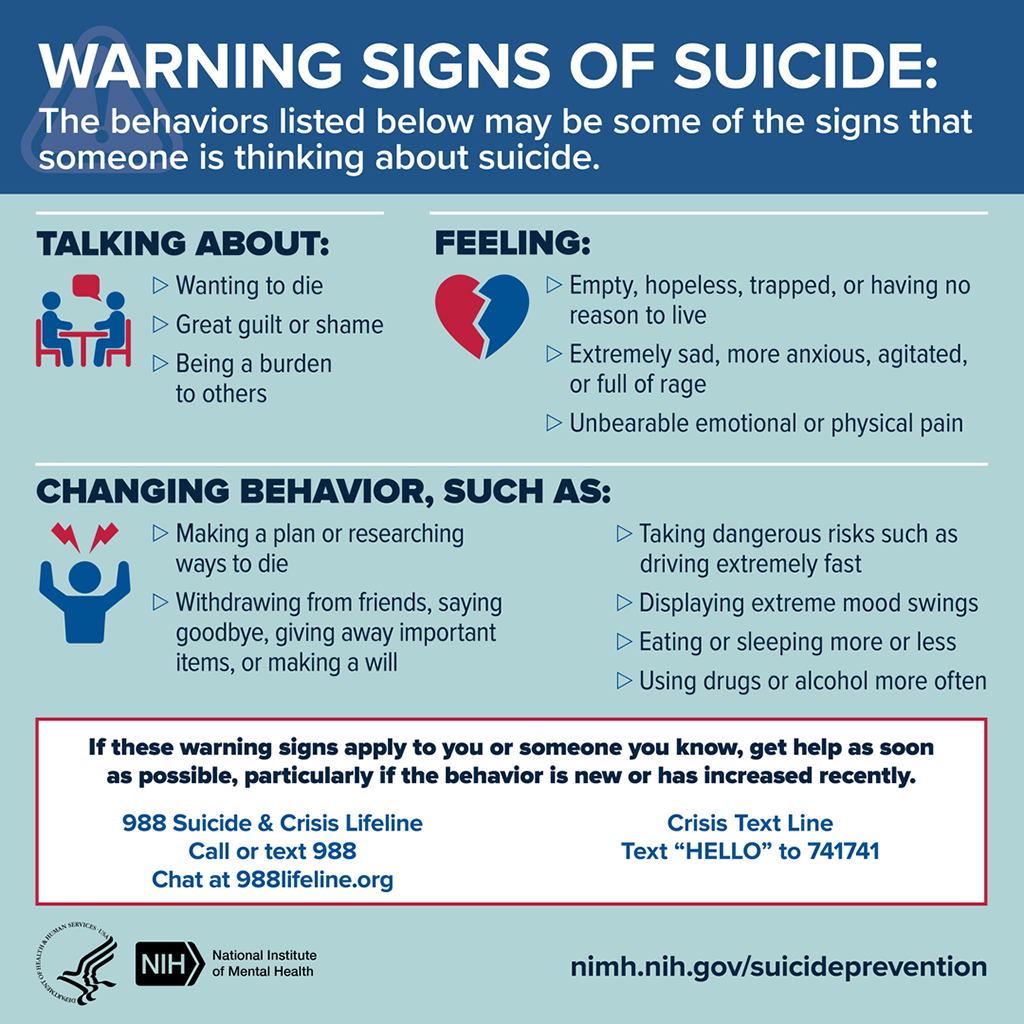Warning Signs
If any of the warning signs below apply to you or someone you know, get help as soon as possible, especially if the behavior has increased recently. Please note that these warning signs may manifest differently in each individual and may vary across age groups.
Talking about:
Death — mention of dying, shooting, jumping, or any other types of self-harm
Great guilt or shame
Being a burden to others
Physical symptoms often related to emotions — stomachaches, headaches, fatigue, etc.
Feeling:
Empty, hopeless, trapped, or having no reason to live
Extremely sad, more anxious, agitated, or full of rage
Unbearable emotional or physical pain
Worthless or useless
Change in Behavior:
Making a plan or researching ways to die
Withdrawing from friends, saying goodbye, giving away important items, or making a will
Taking dangerous risks such as driving extremely fast
Displaying extreme mood swings and/or changes in personality — consistently apathetic, withdrawn, sad or irritable
Sleeping more or less, insomnia, or nightmares
Eating more or less, losing or gaining weight
Unable to complete daily activities such as school work, persistent boredom, difficulty concentrating
Using drugs or alcohol more often
Loss of interest in people, things, places and activities previously cared about
Unusual neglect of personal appearance
Stockpiling medications
Completing or revising a will
High Risk Warning Signs:
Communicating a desire and/or plan to die by suicide
Obtaining a weapon or other means of lethal self-harm

